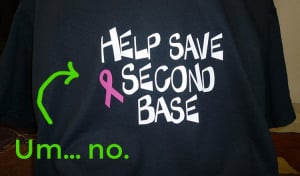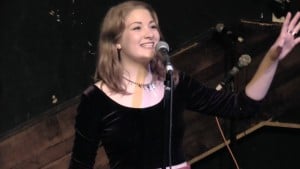
Group of people smiling
You’re walking down the street and you see someone commit a crime or do harm. What’s your first instinct?
For some of us, it might be to call the police. From the time we’re little, adults instruct us on how to dial 911, or we learn ourselves because we have to. But do we always have to? Will we always have to?
I’m not necessarily saying we should never call the police or report people who harm or inflict violence upon us; I stand beside those who need to and want to do this.
At the same time, Black and brown communities intuitively know all too well that the police and its friendly counterpart, prisons, actually do more harm than good. When it comes to police and prisons, if you’re not a straight, white, upper-class man, you’re basically screwed.
Black and brown people, trans and queer people of color, the working class, indigenous people, and those with disabilities are some marginalized groups that bear the brunt of the blow.
But all of us suffer from the current system of punishment by prisons and police, whether we realize it or not.
Realizing that police and prisons often fail our communities, how can we brainstorm some ways to close this gap?
One approach to responding to violence in our communities is seeing a comeback — it’s called transformative justice.
Transformative justice refers to alternative healing practices for and by the people — practices which both address specific instances of violence that come up and also work towards personal and societal transformation.
History
The phrase “transformative justice” arose out of work by 19th and 20th century Quakers Samuel Tuke, Ruth Morris, and Giselle Dias, as well as sociologist and criminologist Richard Quinney.
Transformative justice has a lot of overlap with restorative justice, which also names community-centered ways of addressing violence. However, transformative justice seeks to go further, transforming ourselves and our relations on a broader societal level.
For example, if a child steals bread because they are hungry, transformative justice considers the social conditions that made the child hungry, while acknowledging that stealing is not okay and working with the child to alter their behavior. At the same time, it centers the emotional and physical safety of the person the child stole from.
This may seem like a lofty ideal, but people have been using restorative and transformative justice models with great success, despite its challenges.
What has this looked like?
Even before the term “transformative justice” was created, ancient communities of color across the world had been building these practices.
Historically, the white, male founders of the United States built this country’s foundation on violence against marginalized people.
People of color were forced to come up with their own ways to sustain themselves and take care of each other in a world that was — and still is — not made for them.
From Black communities during and after slavery to indigenous populations in the U.S. and Canada to migrants forming new communities in the United States, communities of color have always developed revolutionary ways to protect each other.
Examining the many ways this can look like can help us envision new futures for ourselves and those we love, and consider the question: How can we hold each other closer?
1. Street Patrols
In 1960s Boston, Mass., many women worked late-night factory shifts as their source of income. The summer of 1968, there was a series of mass murders of women. Native American activist Roxanne Dunbar-Ortiz founded women’s liberation group Cell 16 that year as a response.
For women who didn’t have a partner picking them up, members offered to walk with them to public transit or walk them home.
This not only provided safety in numbers but also let individuals know that they were on watch.
Cell 16 was one of the first women’s groups to offer feminist self-defense classes. These Taekwondo classes were free so any woman could attend.
It was also one of the first organizations that used a community-centered approach to address the gap in police protection for marginalized women.
2. Self Defense for Everyone
Martial artists Annie Ellman and Nadia Telsey founded Brooklyn Women’s Martial Arts (BWMA) in 1974, which still exists today as the Center for Anti-Violence Education.
BWMA’s training sessions were based on the fact that many women face multiple oppressions.
For example, sexist remarks against a woman of color might be based on racist stereotypes. Or, an undocumented woman might have a hard time getting correct information about financial resources for a potential abortion without a driver’s license or passport.
BWMA created some of the first self-defense workshops catering to women of color, queer people, trans individuals, people with disabilities, those living with HIV/AIDS, and children.
After 9/11, BWMA offered trainings for groups that served Arab American, South Asian, and other migrant populations who became even more vulnerable.
Not only were BWMA’s workshops sliding scale, but they also provided childcare for single mothers with less support and mobility.
The fact that BWMA provided workshops specifically geared towards marginalized groups was revolutionary at the time, and still is today.
3. The Green Light
In 1979, twelve Black women were murdered in Roxbury and Dorchester, two majority Black neighborhoods in Boston.
The police ignored these recurring incidents but managed to quickly respond to a series of rape cases in a primarily white neighborhood — a phenomenon that still exists today.
After the second murder, Roxbury and Dorchester residents created the Dorchester Green Light Program, which provided safe houses for women who were threatened or assaulted on the streets.
Neighbors who wanted to offer up their homes as safe houses went through an extensive application and screening process, and received training on self-defense.
Green light bulbs lit up the porches of safe houses whenever someone was home, so women would be able to identify places to go. In less than a year, residents had created over 100 safe houses.
The Green Light Program was an innovative response to police brutality against Black women in particular.
4. Safe Zones and Sista Circles
In the mid-1990s, a group of women of color in Bushwick, a low-income neighborhood in Brooklyn, formed Sista II Sista / Hermana a Hermana. After New York police murdered two young women of color in 2000, members rose up to take action.
They created a safe zone in their neighborhood where crime would not be tolerated, a hotline, and discussion groups called “Sista Circles” where members shared their experiences and brainstormed ways to support each other in instances of violence and abuse.
For example, one woman brought up that her ex-boyfriend was stalking her and using psychological intimidation, and she was worried that things were going to escalate.
The group confronted him at the barbershop where he worked, gaining the support of his co-workers and boss, who told him he would be fired if he continued this behavior.
These community responses provided support and safety for women responding to violence in their lives.
5. Training Future Youth Leaders
Moving from the East Coast to the West Coast, we end up at FREE L.A. High School in Inglewood, Calif.
Youth Justice Coalition, a local organization that fights against incarceration and the prison system, runs Free L.A. High School out of community hub Chuco’s Justice Center. The school’s name stands for “Fight for the Revolution that will Educate and Empower Los Angeles.”
Recognizing the lack of resources and support for suspended, expelled, arrested, and incarcerated youth, FREE L.A. High School has been working to close this gap since 2007.
The school combines college prep courses with community organizing training on topics from street law and court defense support, to public policy and food justice.
Across this diversity of classes and workshops, a common practice is the format of facilitators and students sitting in a circle.
Originally created by Native Americans in the U.S. and First Nations people in Canada, the healing circle, or talking circle, allows for conflict resolution, problem-solving, and community building.
As FREE L.A. High School counselor Stacey Cook says, “The ultimate goal is that young people will be able to take [this knowledge] back to their homes and communities and use language, conversations, and problem-solving instead of street violence.”
By providing a healing alternative to probation, attendance at underfunded continuation schools, write-ups, detention, suspension, and expulsion, FREE L.A. High School is helping to break the cycle.
***
These are just a few of the many groups that have developed alternative healing practices outside of prisons and police.
Certainly, this is just the beginning. There is so much room for us to imagine new futures, and transformative justice is one tool we can use in this process.
[do_widget id=’text-101′]
Marisa Cherry is an Everyday Feminism Reporting Fellow. Marisa is a queer, mixed Asian American woman, community worker, and cultural worker. She holds a B.A. in Media Studies and Critical Studies from Pomona College, where she focused on visual art by people of color. Contextualizing herself within historical movements of survival and resistance, Marisa is most interested in brainstorming alternatives to violence and envisioning new futures where our communities are supported and well-resourced. She enjoys watching an above-average amount of TV, spending time outdoors, poetry, and petting dogs.
Search our 3000+ articles!
Read our articles about:
Our online racial justice training
Used by hundreds of universities, non-profits, and businesses.
Click to learn more




















